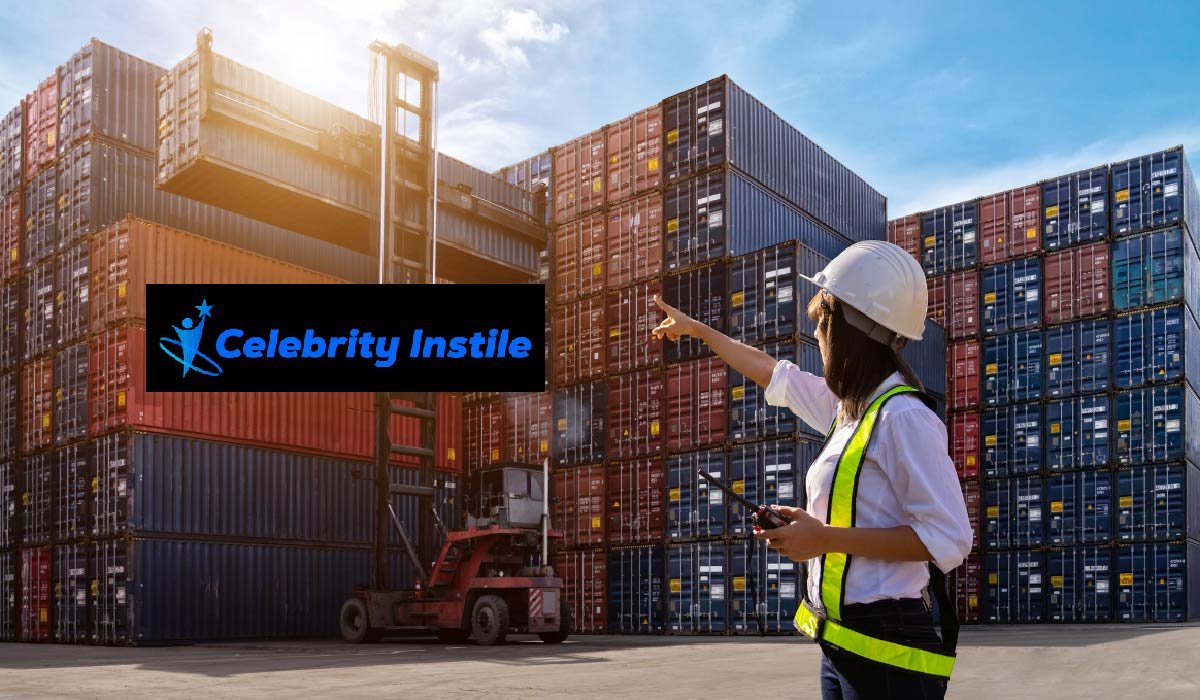What Is Logisths?
Logisths is a powerful and emerging concept that represents the next level of modern logistics. It is more than just a trendy word—it is a blend of cutting-edge technology, intelligent systems, and strategic thinking that completely transforms the way goods and services move across the world.
At its core, logisths refers to the integration of traditional logistics functions such as transportation, warehousing, and inventory management with advanced technologies like artificial intelligence, machine learning, automation, robotics, and the Internet of Things (IoT). This fusion creates a smarter, faster, and more efficient system that ensures the right product is delivered to the right customer, at the right time, in the right condition, and at the right cost.
Unlike traditional logistics, which often depends on manual processes and delayed data, logisths operates in real-time, offering complete visibility, predictive planning, and improved customer satisfaction. It is not just a function; it is a system-wide solution that redefines how businesses operate in today’s fast-paced global economy.
The Origin and Evolution of Logisths
The roots of logisths can be traced back to the historical evolution of logistics itself, which began in ancient military operations. Armies needed reliable systems to transport food, weapons, and supplies over long distances. As civilizations advanced, so did trade routes and supply chains. During the Industrial Revolution, the development of railroads and shipping lines enabled larger-scale distribution of goods.
In the 20th century, logistics began taking shape as a business discipline, supporting manufacturing and retail industries. However, it wasn’t until the digital age that logistics saw its biggest transformation. The birth of e-commerce and the demand for fast delivery pushed businesses to modernize their supply chains. The term “logisths” emerged to reflect this transformation—a high-speed, high-tech logistics system that leverages automation, cloud computing, AI, and real-time data.
It marks a shift from static, reactive systems to dynamic, proactive networks that can adapt instantly to changing demands. Logisths today stands as a modern response to the challenges of global commerce, customer expectations, and environmental sustainability.
Also Read: 185.63.253.2pp Explained: What It Means and Why It Matters
Key Features and Components of Logisths
Logisths is built on several core components that work together to streamline logistics operations and increase efficiency across the supply chain. The first component is real-time transportation management, which involves the intelligent coordination of vehicles, routes, and delivery schedules using GPS, AI, and traffic data. This ensures faster deliveries, fewer delays, and optimized fuel usage.
The second major component is smart warehousing, where automated systems handle sorting, picking, and packaging. Technologies like robotics, barcode scanners, and warehouse management systems (WMS) play a critical role in improving accuracy and reducing manual labor. Inventory control is another key area in logisths. With predictive analytics and machine learning, businesses can now forecast demand more accurately, prevent overstocking or stockouts, and ensure products are always available when needed.
Additionally, order fulfillment and last-mile delivery are managed through platforms that connect drivers, customers, and warehouses in real time, ensuring seamless end-to-end delivery. Another important component is reverse logisths, which focuses on handling returns, repairs, recycling, and disposal in a cost-effective and eco-friendly way. These integrated functions make logisths a comprehensive system that goes far beyond traditional logistics.
How Technology Powers Logisths

Technology is the heart of logisths and the reason it is revolutionizing global supply chains. One of the most important technologies powering logisths is Artificial Intelligence (AI), which allows systems to learn from data, make predictions, and automate decisions. AI helps in route optimization, demand forecasting, and identifying risks before they become problems. Machine Learning (ML), a branch of AI, enables systems to adapt and improve over time without human input.
Another vital technology is the Internet of Things (IoT), where sensors and devices are connected to track goods in transit, monitor warehouse environments, and provide real-time updates on shipments. Automation and Robotics have changed how warehouses operate—robots can now pick, pack, and ship items faster than humans, reducing errors and improving speed. Cloud Computing allows data to be accessed and shared across multiple locations and devices, enabling better coordination and faster response times.
Blockchain technology is also gaining popularity in logisths because it ensures transparency and security in the movement of goods and financial transactions. All these technologies together create a smart, connected ecosystem that makes logisths a truly advanced logistics solution.
Benefits of Logisths for Businesses
Businesses that adopt logisths enjoy a wide range of benefits that go beyond simple cost savings. One of the biggest advantages is efficiency. With automated systems and smart technology, tasks that once took hours can now be done in minutes. This leads to faster deliveries, reduced downtime, and fewer errors. Another major benefit is cost reduction. By optimizing transportation routes, improving inventory accuracy, and reducing manual labor, companies can lower their operating expenses significantly.
Customer satisfaction also improves because logisths ensures timely and accurate deliveries, easy return processes, and real-time updates. Businesses gain a competitive edge as they can respond to market changes more quickly and offer better service than those using traditional logistics methods. Moreover, scalability becomes easier with logisths, as digital systems can be expanded without heavy infrastructure investment.
Finally, sustainability is a key benefit. Logisths reduces fuel use, waste, and carbon emissions by optimizing deliveries and encouraging recycling. Companies that care about the environment find logisths to be a powerful ally in achieving green goals while still meeting customer demands.
Applications of Logisths in Different Industries
Logisths is not limited to one type of business—it has applications in almost every industry that relies on the movement of goods. In e-commerce, logisths is essential for managing online orders, shipping, and returns at scale, allowing companies to offer same-day or next-day delivery. In the healthcare industry, it helps track the delivery of medicines, vaccines, and medical equipment with precision, ensuring safety and compliance.
The retail sector uses logisths to balance stock across physical stores and online platforms, avoiding lost sales and overstocking. In manufacturing, logisths helps keep production lines running smoothly by ensuring raw materials and components arrive just in time. The food and beverage industry benefits from temperature-controlled logistics and real-time tracking, keeping perishable items fresh and reducing spoilage.
Even in construction, logisths is used to deliver heavy equipment and materials to job sites efficiently. This shows that logisths is a flexible, adaptable solution that meets the unique needs of a wide range of industries.
Logisths vs. Traditional Logistics
It’s important to understand the difference between logisths and traditional logistics. Traditional logistics focuses mainly on the physical movement and storage of goods. It often involves manual processes, paper documentation, and delayed communication between departments. While it may work for basic supply chain functions, it lacks the speed, flexibility, and intelligence needed for today’s fast-paced market. Logisths, on the other hand, is data-driven, real-time, and customer-focused.
It uses technology to connect every part of the supply chain, allowing for faster decisions, more accurate tracking, and better service. Traditional logistics is reactive—it solves problems after they happen. Logisths is proactive—it prevents problems before they occur. While traditional logistics may be slower and less efficient, logisths offers end-to-end visibility, dynamic planning, and the ability to scale quickly. This makes logisths the smarter choice for businesses looking to stay ahead in a competitive environment.
The Future of Logisths
The future of logisths looks extremely promising as technology continues to evolve. We are already seeing the rise of autonomous delivery vehicles, such as drones and self-driving trucks, which are expected to play a big role in last-mile delivery. AI will become even more advanced, helping businesses make smarter decisions and customize services for each customer.
Predictive analytics will be able to anticipate demand with near-perfect accuracy, reducing waste and increasing satisfaction. Green logistics will become a standard part of logisths, as companies focus on sustainability and reducing their environmental impact. Innovations like digital twins, which create real-time digital models of supply chains, will help simulate and plan better operations.
Augmented reality (AR) and virtual reality (VR) could be used in training and warehouse management. All these developments point to a future where logisths is not just an option—it is a necessity for survival and growth in the global market.
Also Read: Adnis Reeves: The Untold Story of Jay-Z’s Father and His Life Journey
Conclusion: Why Logisths Matters More Than Ever
In today’s world, where speed, accuracy, and customer experience are everything, logisths stands out as the ultimate solution for modern logistics. It combines the best of technology and strategy to create a system that is faster, smarter, and more sustainable. Logisths is not just about moving goods—it’s about transforming how businesses operate, how customers are served, and how the global economy functions.
Companies that adopt logisths can expect lower costs, happier customers, and greater flexibility in an unpredictable world. As industries continue to grow and the demand for faster service increases, logisths will become the new standard in logistics. For businesses that want to compete and succeed in the future, understanding and implementing logisths is not optional—it’s essential.
FAQs
1. What is Logisths?
Logisths is a modern logis tics system that uses smart technology like AI, automation, and real-time tracking to move goods faster, safer, and more efficiently. It helps businesses deliver products to customers quickly and manage inventory with less waste.
2. How does Logisths work?
Logisths works by combining traditional logistics tasks—like shipping and storage—with new technologies such as artificial intelligence, robots, and the Internet of Things (IoT). This helps businesses track orders in real-time, plan better delivery routes, and reduce human error.
3. What is the main goal of Logisths?
The main goal of Logisths is to make the movement of goods faster, more accurate, and more cost-effective. It ensures the right product reaches the right customer at the right time, while saving money and reducing waste.
4. Why is Logisths important for businesses?
Logisths helps businesses lower delivery costs, speed up shipping, manage inventory smarter, and improve customer satisfaction. It also supports business growth and makes operations more efficient.
5. What industries use Logisths?
Logisths is used in many industries, including e-commerce, retail, healthcare, food delivery, manufacturing, and transportation. Any business that moves products or materials can benefit from Logisths.
6. What technologies are used in Logisths?
Logisths uses advanced technologies like artificial intelligence (AI), machine learning, automation, robotics, GPS tracking, and cloud systems. These tools help businesses make smart decisions and respond to changes quickly.
7. How is Logisths different from traditional logistics?
Logisths is faster, smarter, and more connected than traditional logistics. It uses real-time data and automation, while traditional logistics often relies on slow manual work and paper-based systems.
8. Can small businesses use Logisths?
Yes, small businesses can use Logisths by starting with simple tools like online inventory systems or delivery tracking apps. As they grow, they can add more features to improve their operations.






